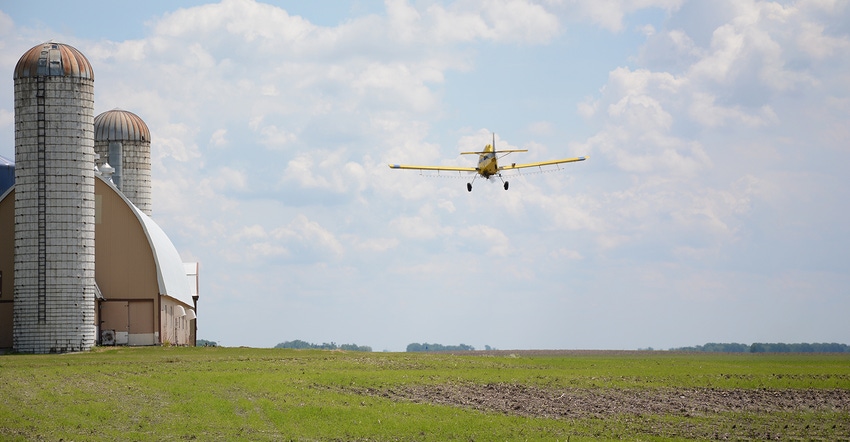
I’ve been posting a bit more on social media this past week in response to a recent news release issued by the Environmental Working Group.
The Washington, D.C.-based activist group issued news of its annual “Shoppers Guide to Pesticides in Produce,” and a list of the alleged top 12 pesticide-laced foods. Numerous media outlets, including Time magazine and Minneapolis-based KARE 11, picked up the release and ran it.
EWG says its annual shoppers guides are based on information taken from annual USDA Ag Marketing Service reports on pesticides in selected foods. The most recent USDA report was released last December and based on 2017 data.
As I read the EWG news release last week, I came away with more questions than answers. It was all EWG anti-pesticide, scare-prompting verbiage. There was no information about pesticide levels detected or if they were science-proven levels of concern or government action.
I was very disappointed to see that some journalists and media simply regurgitated the news release.
Here’s how the March 20 EWG press release began:
“Kale has higher pesticide residues than nearly all other produce found on supermarket shelves, according to the Environmental Working Group’s 2019 Dirty Dozen.
“EWG releases the Dirty Dozen as part of its annual Shopper’s Guide to Pesticides in Produce, which analyzes Department of Agriculture test data to identify which fruits and vegetables are most and least contaminated with pesticide residues. The Shopper’s Guide also includes the Clean Fifteen, a list of the fruits and vegetables with the lowest amount of residues.
“On this year’s Dirty Dozen, kale ranks third, after strawberries and spinach.
“‘We were surprised kale had so many pesticides on it, but the test results were unequivocal,’ said EWG toxicologist Alexis Temkin. ‘Fruits and vegetables are an important part of everyone’s diet, and when it comes to some conventionally grown produce items, such as kale, choosing organic may be a better option.’
“In USDA’s most recent round of tests, more than 92% of conventionally grown kale samples had at least two or more pesticide residues. Some samples contained residues from as many as 18 different pesticides.”
Further down in the news release, EWG states:
“Overall, nearly 70% of the conventionally grown produce sold in the U.S. comes with pesticide residues, EWG’s analysis found.”
Nowhere in its release does EWG say what the pesticide levels were. It simply notes that even low pesticide levels can cause cancer and that consumers should buy organic foods.
What USDA says
Contrast this to the 27th annual USDA Ag Marketing Service Pesticide Data Program report that EWG refers to:
• More than 99% of the products samples had pesticides below EPA tolerance levels.
• 53% of product samples had no detectable pesticide residue.
• Pesticides exceeding the tolerance were detected in 0.59% of the total samples tested �— 58 out of 9,785 samples (excluding bottled water).
• Of these 58 samples, 24 were domestic, 32 were imported and 2 were of unknown origin.
• The samples containing pesticides that exceeded established tolerances included 24 samples of kale, 16 snap pea samples, nine samples of cucumbers, five samples of asparagus, two samples of onions, one sample of fresh cranberries one sample of sweet potatoes.
• Residues with no established tolerance were found in 3% or 320 samples out of 9,785 tested. More than half were imported fresh fruit and vegetables.
The USDA report notes that fresh and processed fruit and vegetables accounted for 83% of the total 10,541 samples collected in 2017. Other samples collected included honey, 3%; milk, 6.7%; and bottled water, 7%. Fresh and processed fruit and vegetables tested were applesauce, asparagus, cabbages, cranberries, cucumbers, garbanzo beans, grapefruits, kale, lettuce, mangoes, olives, onions, pineapples, plums, snap peas, sweet potatoes and tomatoes. Domestic samples accounted for 72% of the tested products, while 26% were imports and the remaining were of mixed national origin or unknown.
A variety of fruits and vegetables — fresh, frozen and processed — have been included in the USDA pesticide survey over the years. The EWG press release mentions strawberries and spinach as being the top two for pesticide contamination. However, that data used by the group is from older USDA reports.
You can read the 203-page USDA report for yourself online.
You’ll learn in detail about the sampling procedures and sample results in parts per million. There are lots of tables and charts that list each food tested, the type and level of pesticide detected and the EPA tolerance levels.
There’s a lot to digest in that report.
After I read it, I continue to believe we have the safest food supply in the world.
Read it and see what you think.
About the Author(s)
You May Also Like






